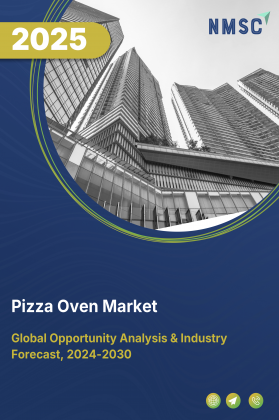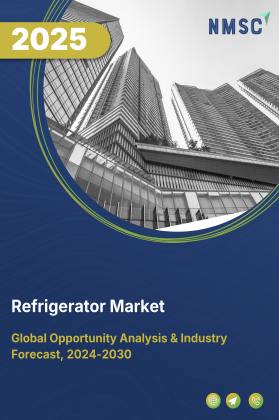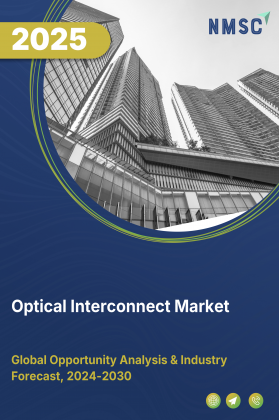
Advanced Packaging for Automotive Market by Type (System-in-Package (SiP), Wafer-Level Packaging (WLP), 3D Packaging, and Others), by Vehicle Type (Passenger Cars, Commercial Vehicles, Electric Vehicles, and Autonomous Vehicles), by Material (Organic Substrate, Lead Frame, Ceramic Substrate, and Bonding Wire) and by Application (Advanced Driver Assistant System (ADAS), Infotainment Systems, and Powertrain Systems) – Global Opportunity Analysis and Industry Forecast 2025-2030
Advanced Packaging for Automotive Industry Overview
The global Advanced Packaging for Automotive Market size was valued at USD XYZ billion in 2024, and is expected to be valued at USD XYZ billion by the end of 2025. The industry is projected to grow further, hitting USD XYZ billion by 2030, with a CAGR of XY% between 2025 and 2030.
The advanced packaging for automotive market is experiencing robust growth, driven by the rising adoption of electric vehicles (EVs), technological advancements in packaging solutions, and the increasing complexity of automotive electronics. However, high costs associated with manufacturing and integrating advanced packaging solutions pose challenges to market expansion. Despite this, innovations in packaging technologies, such as flip-chip ball grid array (FCBGA), present significant opportunities for future growth. Leading players like Lam Research Corporation, Siemens AG, and ASE Technology Holding Co. are adopting strategies such as product launches, partnerships, and expansions to strengthen their market positions.
Rising Adoption of Electric Vehicles Drives Market Growth
The surge in global electric vehicle adoption is a key driver of the advanced packaging for automotive market growth. EVs require sophisticated electronic systems for battery management, power delivery, and energy efficiency, necessitating compact, reliable, and durable packaging solutions. According to the International Energy Agency’s 2024 report, the EV30@30 initiative, supported by 25 countries including China, India, Germany, and the U.S., targets 30% EV adoption by 2030. This ambition fuels market demand for advanced packaging technologies that ensure high performance in demanding automotive environments, propelling market expansion.
Technological Advancements in Packaging Solutions Fuel Market Demand
Advancements in packaging technologies, especially in thermal management, are driving market growth. As automotive electronics become more complex, they produce considerable heat, necessitating packaging solutions that offer improved thermal dissipation. For instance, in January 2024, Freudenberg launched a series of high-heat-resistant polymers compatible with EVs, addressing the need for efficient thermal management. Such advancements drive market trends by enabling packaging technologies to meet the evolving requirements of modern automotive systems, enhancing reliability and performance.
Advancements in Automotive Electronics Propel Market Expansion
The increasing integration of advanced electronics in vehicles, including advanced driver assistance systems (ADAS), infotainment, and engine control units, is boosting demand for sophisticated packaging solutions. In September 2023, BMW Group partnered with Amazon Web Services (AWS) to develop a cloud-based driving platform, enhancing ADAS capabilities in future models. This trend underscores the need for advanced packaging to support high-performance electronics, driving market growth by ensuring compatibility with the industry’s push toward smarter, safer vehicles.
High Costs of Advanced Packaging Hinder Market Growth
The high costs and complexities of manufacturing and integrating advanced packaging solutions remain significant barriers to market growth. Expenses related to specialized materials, precision equipment, and compatibility across diverse automotive systems challenge scalability, particularly for smaller players. These financial hurdles limit market expansion in regions with slower adoption of advanced automotive technologies, restraining broader market demand.
Innovations in FCBGA Create Growth Opportunities for the Market
Emerging packaging technologies, such as flip-chip ball grid array (FCBGA), offer substantial opportunities for market growth. These solutions enable high-speed performance, greater pin density, and superior thermal conductivity, supporting the development of advanced chipsets for automotive applications. As these technologies evolve, they are expected to streamline production, reduce costs, and attract investments, fostering sustainable growth in the advanced packaging market.
Market Segmentations and Scope of the Study
The advanced packaging for automotive market report is segmented on the basis of type, vehicle type, material, application, and region. On the basis of type, the market is divided into system-in-package (SiP), wafer-level packaging (WLP), 3D packaging, and others. On the basis of vehicle type, the market is classified into passenger cars, commercial vehicles, electric vehicles, and autonomous vehicles. On the basis of material, the market is characterized into organic substrate, lead frame, ceramic substrate, and bonding wire. On the basis of application, the market is segmented into advanced driver assistant system (ADAS), infotainment systems, and powertrain systems. Regional breakdown and analysis of each of the aforesaid segments include regions comprising of North America, Europe, Asia-Pacific, and RoW.
Geographical Analysis
Asia Pacific maintains its dominant market share in the advanced packaging for automotive market share, fueled by the rapid growth of the electric vehicle (EV) industry and government-backed manufacturing initiatives. A new EV policy approved by the Government of India in 2024 seeks to attract global manufacturers, bolstering regional investment and demand for high-performance packaging in vehicle control units and power electronics. Similar momentum in China and Japan further strengthens regional output. The presence of leading players such as ASE Technology Holding Co., with its VIPack packaging platform launched in June 2023, supports innovation in thermal performance and system integration. In South Korea, Samsung Electronics continues to advance chip packaging tailored for automotive systems, reinforcing Asia Pacific’s leadership in delivering compact, heat-efficient designs for battery management and ADAS technologies.
North America is anticipated to experience the fastest market growth during the forecast period, driven by expanding EV and PHEV markets and strong policy support. U.S. electric light-duty vehicle sales reached 1.4 million in 2023, up from 1 million in 2022, signalling a clear shift toward electrified mobility. This growth, supported by the U.S. Infrastructure Investment and Jobs Act, which allocated USD 7.5 billion for EV charging networks, significantly increases demand for advanced packaging in battery systems, motor drives, and charging infrastructure. The market also benefits from rising adoption of ADAS and safety features, addressing increasing road safety concerns. In January 2024, Texas Instruments launched the AWR2544 radar sensor and DRV3946-Q1 contactor driver, both designed with advanced packaging to improve sensor performance. These developments, combined with efforts to localize semiconductor production, position North America as a key growth hub complementing Asia Pacific’s market leadership.
Europe continues to expand its footprint in the automotive advanced packaging market, backed by increasing investment in sustainable mobility and next-generation vehicle technologies. Countries like Germany and France focus on decarbonization and localized chip production, promoting advanced packaging for powertrains and electrified systems. Leading European firms such as STMicroelectronics are actively launching new chipsets for in-vehicle control and energy-efficient systems. In 2024, STMicroelectronics advanced its automotive packaging capabilities for medical-grade wearables and EV modules.
The Rest of the World, including Latin America, the Middle East, and Africa, shows emerging potential driven by rising vehicle electrification and localization of automotive supply chains. Brazil, with growing EV penetration and domestic electronics production, creates new demand for thermal and space-efficient chip packaging. South Africa and the UAE continue investing in smart transport and energy-efficient mobility platforms, driving adoption of compact chipsets in vehicle diagnostics and power management.
Growth in the Advanced Packaging for Automotive Market Fueled by Strategic Partnerships and Technological Advancements
The global advanced packaging for automotive industry is highly competitive, with key players driving innovation and market growth. Lam Research Corporation leads with advanced 2.5D and 3D integration technologies launched in September 2024, enabling faster data flow for AI-driven automotive applications. Siemens AG, through its September 2024 collaboration with TSMC, is expanding its portfolio with innovative packaging solutions. ASE Technology Holding Co. introduced its VIPack platform in June 2023, enhancing performance for computing-intensive automotive systems.
Amkor Technology, Inc. expanded its Vietnam packaging facility in May 2023 to meet global demand. Other notable players, including Samsung Electronics Co., Ltd., Intel Corporation, Infineon Technologies AG, Taiwan Semiconductor Manufacturing Co., Ltd. (TSMC), Texas Instruments Inc., Broadcom Inc., Qualcomm Technologies, Inc., United Microelectronics Corporation (UMC), STMicroelectronics N.V., NXP Semiconductors N.V., and Kyocera Corporation, are adopting strategies like partnerships, product launches, and expansions to maintain market dominance. High costs and standardization challenges persist, but rising EV adoption and innovations in packaging technologies continue to drive market demand and create significant growth opportunities.
Key Benefits
-
The report provides quantitative analysis and estimations of the advanced packaging for automotive industry from 2025 to 2030, which assists in identifying the prevailing market opportunities.
-
The study comprises a deep dive analysis of the advanced packaging for automotive industry including the current and future trends to depict prevalent investment pockets in the market.
-
Information related to key drivers, restraints, and opportunities and their impact on the advanced packaging for automotive industry is provided in the report.
-
Competitive analysis of the players, along with their market share is provided in the report.
-
SWOT analysis and Porters Five Forces model is elaborated in the study.
-
Value chain analysis in the market study provides a clear picture of roles of stakeholders.
Advanced Packaging for Automotive Market Key Segments
By Type
-
System-in-Package (SiP)
-
Wafer-Level Packaging (WLP)
-
3D Packaging
-
Others
By Vehicle Type
-
Passenger Cars
-
Commercial Vehicles
-
Electric Vehicles
-
Autonomous Vehicles
By Material
-
Organic Substrate
-
Lead Frame
-
Ceramic Substrate
-
Bonding Wire
By Application
-
Advanced Driver Assistant System (ADAS)
-
Infotainment Systems
-
Powertrain Systems
By Region
-
North America
-
The U.S.
-
Canada
-
Mexico
-
-
Europe
-
The UK
-
Germany
-
France
-
Italy
-
Spain
-
Denmark
-
Netherlands
-
Finland
-
Sweden
-
Norway
-
Russia
-
Rest of Europe
-
-
Asia Pacific
-
China
-
Japan
-
India
-
South Korea
-
Australia
-
Indonesia
-
Singapore
-
Taiwan
-
Thailand
-
Rest of Asia-Pacific
-
-
RoW
-
Latin America
-
Middle East
-
Africa
-
Key Players
-
Lam Research Corporation
-
Siemens AG
-
ASE Technology Holding
-
Amkor Technology, Inc.
-
Samsung Electronics Co., Ltd
-
Intel Corporation
-
Infineon Technologies AG
-
Taiwan Semiconductor Manufacturing Co., Ltd. (TSMC)
-
Texas Instruments Inc.
-
Broadcom Inc.
-
Qualcomm Technologies, Inc.
-
United Microelectronics Corporation (UMC)
-
STMicroelectronics N.V
-
NXP Semiconductors N. V
-
Kyocera Corporation
REPORT SCOPE AND SEGMENTATION:
|
Parameters |
Details |
|
Market Size in 2024 |
USD XYZ Billion |
|
Revenue Forecast in 2030 |
USD XYZ Billion |
|
Growth Rate |
CAGR of XY% from 2025 to 2030 |
|
Analysis Period |
2024–2030 |
|
Base Year Considered |
2024 |
|
Forecast Period |
2026–2030 |
|
Market Size Estimation |
Billion (USD) |
|
Growth Factors |
|
|
Countries Covered |
28 |
|
Companies Profiled |
15 |
|
Market Share |
Available for 10 companies |
|
Customization Scope |
Free customization (equivalent up to 80 working hours of analysts) after purchase. Addition or alteration to country, regional, and segment scope. |
|
Pricing and Purchase Options |
Avail customized purchase options to meet your exact research needs. |




















 Speak to Our Analyst
Speak to Our Analyst

























